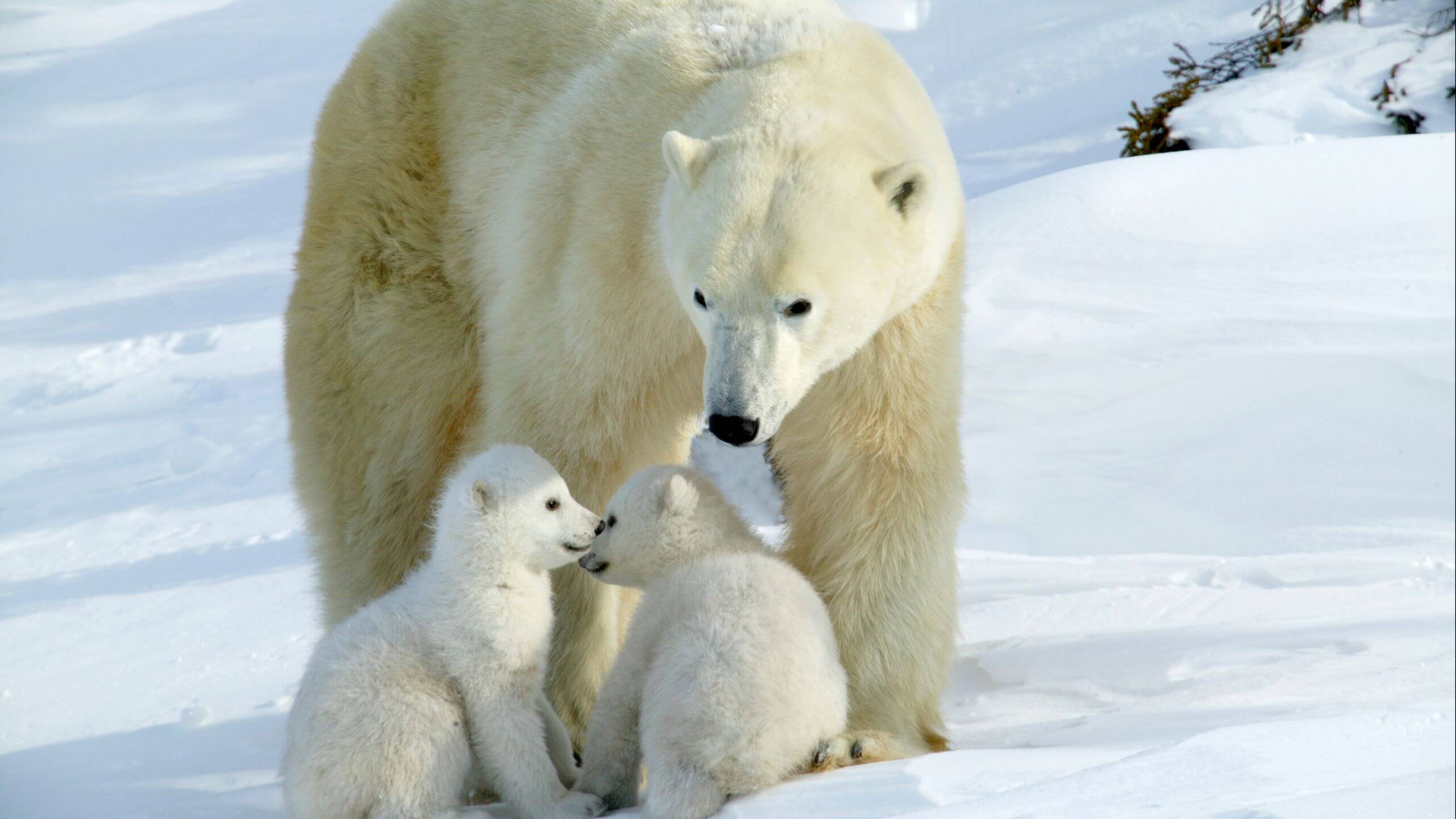The estimated number of polar bears left in the world is between 22,000 and 31,000. Polar Bears are the most iconic species of the arctic ecosystem. But they are also the most affected species due to a variety of factors, including climate change and hunting, causing a severe decline of the population.
Polar Bears lost access to their primary food (seals) due to global warming as it causes a significant decline in the sea ice. No food means no survival. Melting of ice leads to decreased survival rates for cubs and adults alike.
Human activities such as oil exploration also threaten their habitats by introducing pollutants into the environment or even with noise pollution. However, conservation efforts such as protected habitat designations have been implemented in some regions but more needs to be done if we hope for these majestic creatures’s long-term survival in our rapidly changing world.

How Many Polar Bears Are Left In The World?
According to the World Wildlife Fund, there are approximately 22,000 – 31,000 polar bears left in the world. The rapid decline of this species is largely due to climate change and human activity such as hunting for sport or fur trade.
There is a significant decrease from decades ago, when it was estimated that there were as many as 40,000-50,000 polar bears living in their natural habitats. The melting of sea ice due to global warming had a huge impact on the population of polar bears because they rely on sea ice for hunting seals which provide them with food and sustenance throughout winter months when other sources are scarce.
As temperatures continue to rise each year more areas become uninhabitable for these animals. This leads them further away from their usual habitats where resources may be limited or nonexistent altogether, causing starvation among some populations and resulting in death too.

Why are polar bears endangered?
Following are the variety of reasons why such iconic species of the Arctic are endangered:
- Climate change is the most significant reason for drastic decline in the levels of sea ice, causing a decrease in the access to the food sources such as seals which are the major portion of the Polar bear’s diet.
- Pollution caused by human activities such as disposal of chemicals towards the oceans contributes significantly by contaminating both polar bears habitats and food sources with toxic chemicals that can be fatal when ingested.
- Hunting is another main reason that severely poses a threat to these animals as some humans still hunt polar bears for sport or fur despite legal protections against it in many regions.

How Can We Help Save Polar Bears?
Fortunately organisations like WWF (World Wildlife Fund) have been working hard over recent years towards protecting these majestic creatures. Through initiatives such as creating marine protected areas around critical habitat sites and reducing threats posed by humans directly interacting with wild populations.
Moreover, there are several programs designed specifically aimed at educating people about coexisting peacefully alongside wildlife while still maintaining healthy ecosystems necessary for all species survival including our own.
How many polar bears were there 100 years ago?
It is difficult to determine exactly how many polar bears were present 100 years ago, as the population size of polar bears has fluctuated over time due to a variety of factors, including changes in prey availability, competition with other bears, and natural variations in reproductive rates.
🔬 Subscribe to SciMail
Get the latest science discoveries straight to your inbox!
We can approximately estimate that the population of polar bears a 100 years ago was 40,000 – 50,000+. Today, however, it is believed that the global population of polar bears has declined by around 30%, with an estimated total population now ranging from 22-31 thousand individuals across 19 subpopulations in five countries.

How many polar bears have died due to climate change?
It is difficult to attribute any specific number of deaths directly to climate change, as other factors may also be contributing to the decline in polar bear populations.
However, climate change is having a devastating effect on polar bear populations worldwide. In recent years, the melting of sea ice habitats has caused an estimated 22% decline in the global population of polar bears and this trend is expected to continue as temperatures rise. It is estimated that polar bear populations have declined by about 40% over the past three decades due, in part, to the impacts of climate change.

How Long Do Polar Bears Have Left on Earth?
As global temperatures continue to rise, it is becoming increasingly clear that polar bears may not be able to survive much longer on Earth unless we take drastic actions now.
Polar bears are facing a grim future due to climate change and the melting of their Arctic sea-ice habitat. Scientists estimate that polar bear populations could decline by 30% over the next three generations, leaving them with a mere fraction of their current numbers in as little as 50 years.
Unfortunately, many individual bears have already died due to starvation or drowning as a result of their disrupted habitat. This situation highlights the need for urgent action on climate change if we are to protect these iconic Arctic species from further losses in future generations.

Will Polar Bears Go Extinct By 2050?
Studies indicate that if current trends continue, the Arctic will be nearly ice-free by 2050 due to global warming and this could lead to a drastic decline in the population of polar bears. This means that without urgent action taken now, it is likely that polar bears could become extinct by 2050 due to climate change and its effects on their environment.
In order to save Polar bears from getting extinct, it is essential for governments around the world to take meaningful steps towards reducing emissions and protecting our planet’s delicate ecosystems so we can ensure these majestic creatures remain part of our natural world for generations to come.


Leave a Reply